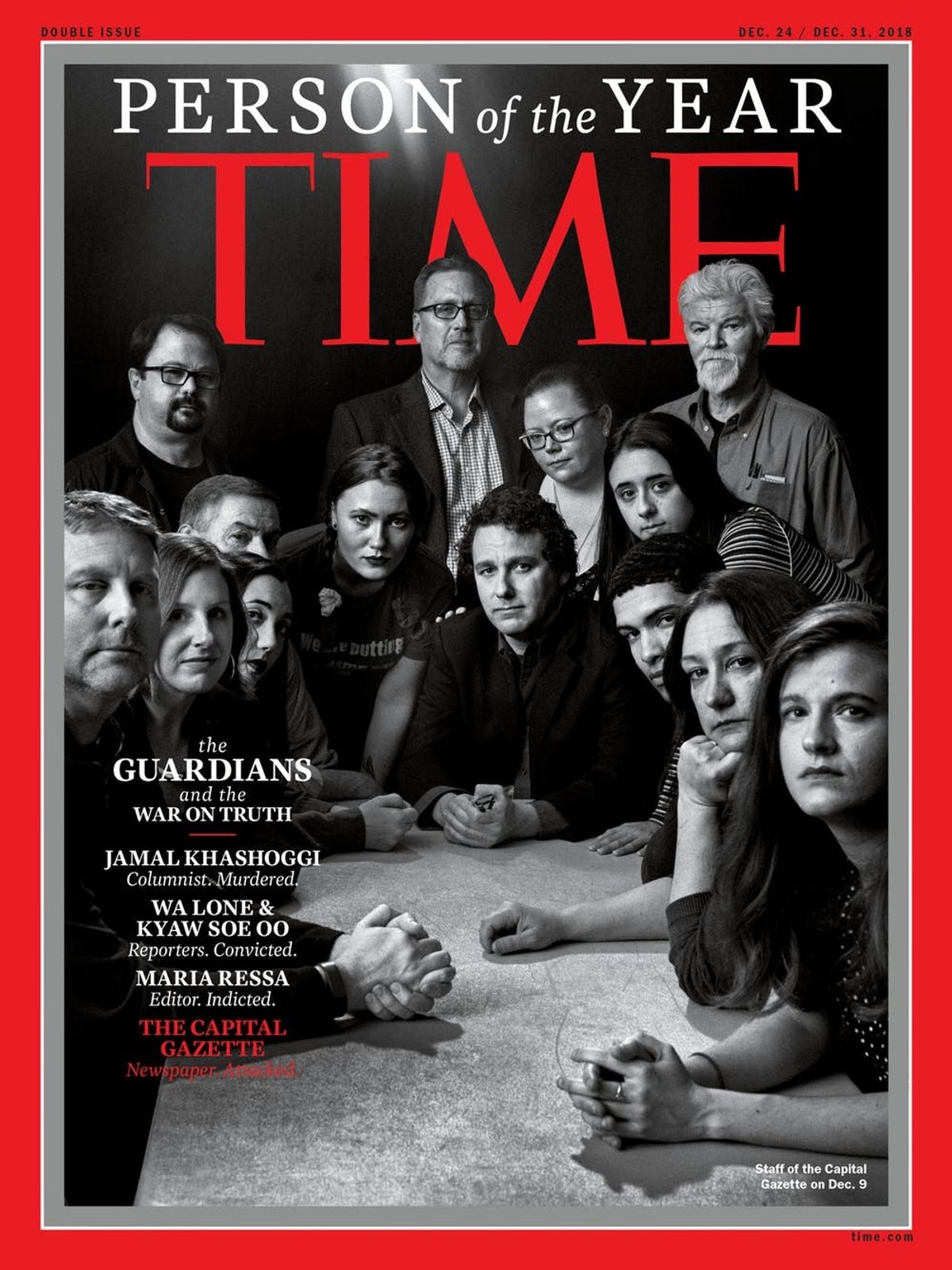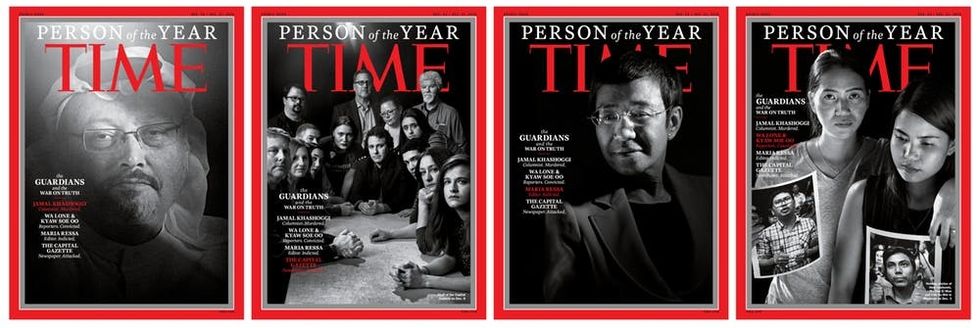Time’s ‘Person of the Year’ Is a Not-So-Subtle Response to Attacks on the News Media

Journalists fighting back in “the war on truth” have been named Time magazine’s “Person of the Year” for 2018. Time‘s special issue highlights “The Guardians” — several global journalists who have been jailed, attacked, tortured, and/or killed simply for doing their jobs.
The journalists include the Washington Post‘s Jamal Khashoggi, who was killed earlier this year in Istanbul by operatives from his home country of Saudi Arabia; jailed journalists Wa Lone and Kyaw Soe Oo, two reporters who first uncovered attacks against Muslims in Myanmar; the victims and survivors of the attack at Maryland’s Capital Gazette; and Philippine journalist Maria Ressa, who faces jail time on tax charges (which she says are false) brought by the government she is critical of on her website Rappler. These journalists all share one thing in common: the desire to tell the public honest stories about the world around them, regardless of the persecution they may face.

And while a first glance at this year’s recipients may give the impression that the magazine is highlighting extreme cases of journalist suppression, Time‘s decision to shine a spotlight on these figures also shines a light on an issue we’re currently facing at home: the continued attack on news reporters, particularly with President Trump’s constant claims of media bias through what he calls “fake news.”
The term “fake news” isn’t new, but its meaning and its usage have become common over the last few years. Originally, the term was applied to media that worked to spread disinformation or downright lies and associated with regimes that worked to control their citizenry, or to hide violent or damaging actions by a particular government.
But since Trump officially took office in 2017, the idea of fake news as a tool of a political party has spread to the US, and its use is actually quite insidious. Today, the administration appears inclined to dismiss any journalist who says anything that goes against the preferred narrative as false, and therefore damaging to the general public. In so doing, the administration is effectively blaming reporters for doing their job to uncover the truth.
The Trump administration’s attempted suppression of journalism goes beyond calling news outlets like CNN, The New York Times, and NBC News “fake.”
This year, CNN reporter Jim Acosta had his media credentials pulled from the White House after he asked a question the president didn’t like. The administration eventually claimed that Acosta had attacked a White House staffer (although video evidence proved otherwise). And a few weeks prior to that incident, reporters at CNN were evacuated from their New York City headquarters after a suspicious package was delivered to their broadcast center, allegedly from a pro-Trump extremist in Florida.
Journalists around the world are jailed, killed, or forced to flee their homes in order to protect themselves when doing their jobs. The jailing of journalists, in particular, is still common globally, even within nations like Turkey, Egypt, and China.
“As we looked at the choices, it became clear that the manipulation and abuse of truth is really the common thread in so many of this year’s major stories,” Time’s editor-in-chief Edward Felsenthal told Today on Tuesday morning while unveiling the magazine’s covers.
But it’s not just about the he-said-she-said, or a political group’s attempt at directing the narrative. As Time notes in its cover story, journalists take note of what people say and do, and even how they try to spin particular narratives — hopefully in order to help the public fully understand what is happening in the world around us.
With actual false news able to spread quickly on social media, the ability for journalists to do their jobs accurately is more important than ever. “This ought to be a time when democracy leaps forward, an informed citizenry being essential to self-government. Instead, it’s in retreat,” Time says of their choice, explaining that while old-school dictators happily embraced censorship, modern wannabes have to sow the seeds of distrust by attacking journalists instead.
“Because the strongmen of the world only look strong,” they explain. “All despots live in fear of their people. To see genuine strength, look to the spaces where individuals dare to describe what’s going on in front of them.”
(Photos via Time Inc.)


















